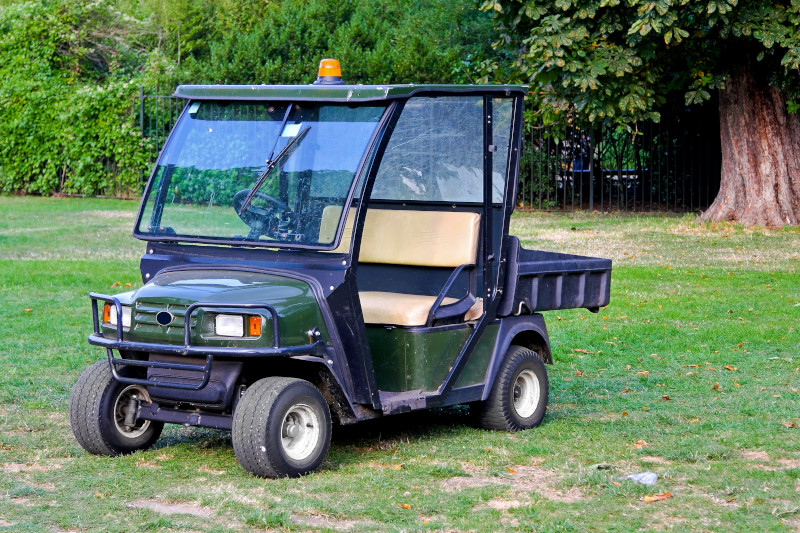Stay safe on utility vehicles

Your school may use all-terrain vehicles (ATVs), golf carts or utility vehicles for jobs such as landscaping, moving equipment or transporting staff members to places that can’t be reached by other vehicles. They’re incredibly useful and versatile, but they can also be incredibly hazardous.
For one thing, such vehicles may not have rear and side view mirrors, turn signals, back up cameras or windshield wipers. As a result, they are not as safe as other vehicles, which is why you should make sure the staff members who are driving them have been properly trained.
The following are some of the most important safety tips your staff members should follow:
- Complete a pre-operation safety check every time you use one of these vehicles. You can follow a T-CLOC check:
- T – tires and wheels.
- C – controls and cables.
- L – lights and electronics.
- O – oil, fuel, fluids and air filters.
- C – Chassis, suspension, driveshaft and external equipment.
- Never allow passengers unless the vehicle is designed for more than one person. Many ATVs have seats large enough for two passengers, but they are designed for the rider to move around to make corners and adjust for changes in terrain. Consult the vehicle’s manual before allowing passengers.
- Never allow students to drive the vehicle. While the vehicles’ manuals may allow for drivers who are 16 and older, there is too much liability involved with allowing a student to drive. Just as you wouldn’t let a student operate a car or truck that belongs to your school, don’t let them be anything more than a passenger.
- Always make sure the tires are in good condition. They should be inflated to the suggested tire pressure and have proper tread depth.
- Always ride at a safe speed. Remember to respect the power and danger of these vehicles, and never allow any horseplay on or around the vehicle.
- When you are driving, slow down before turning and use extra care while turning. Avoid hills with slippery surfaces, and drive straight up and down inclines, not across them.
- If your vehicle feels like it might be rolling over, never try to use your hands or legs to brace yourself. Brace your feet against the floorboards and hold tight to the steering wheel, handlebars or passenger handholds.
- Use hand signals when turning. Because most of these vehicles are not equipped with turn signals, it can be difficult for other drivers to anticipate your movements. Help them by using hand signals.
- Do not allow people to ride standing or sitting in the back of the vehicle. This can throw off the balance.
- Move to the side and stop to let pedestrians and cyclists pass. They should always have the right of way.
- Look over your shoulder before turning or changing paths. It is your responsibility to watch out for others on your path.
When you’re parking the vehicle, follow these tips:
- Place the transmission in neutral and apply the parking brake.
- When leaving the vehicle unattended, turn off the ignition and take the key.
- Always park on pavement, designated service vehicle parking spots, or a flat area.
- Never block exits for vehicles or exits from the building or sidewalks.
Make sure you foster an atmosphere of open communication with your staff members. They should be reporting any incidents, large or small, to their supervisor.
Check out these resources for more transportation risk and safety information.




